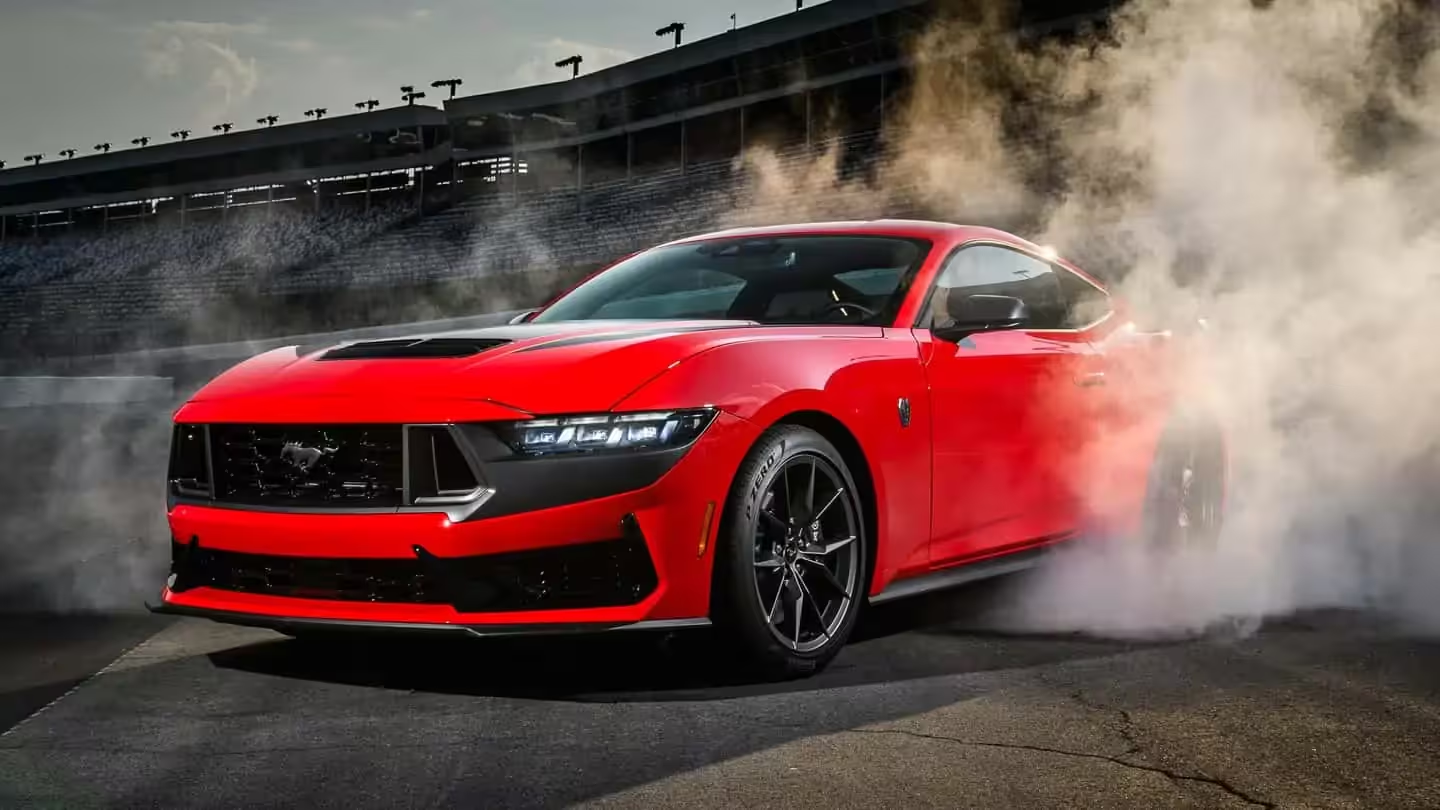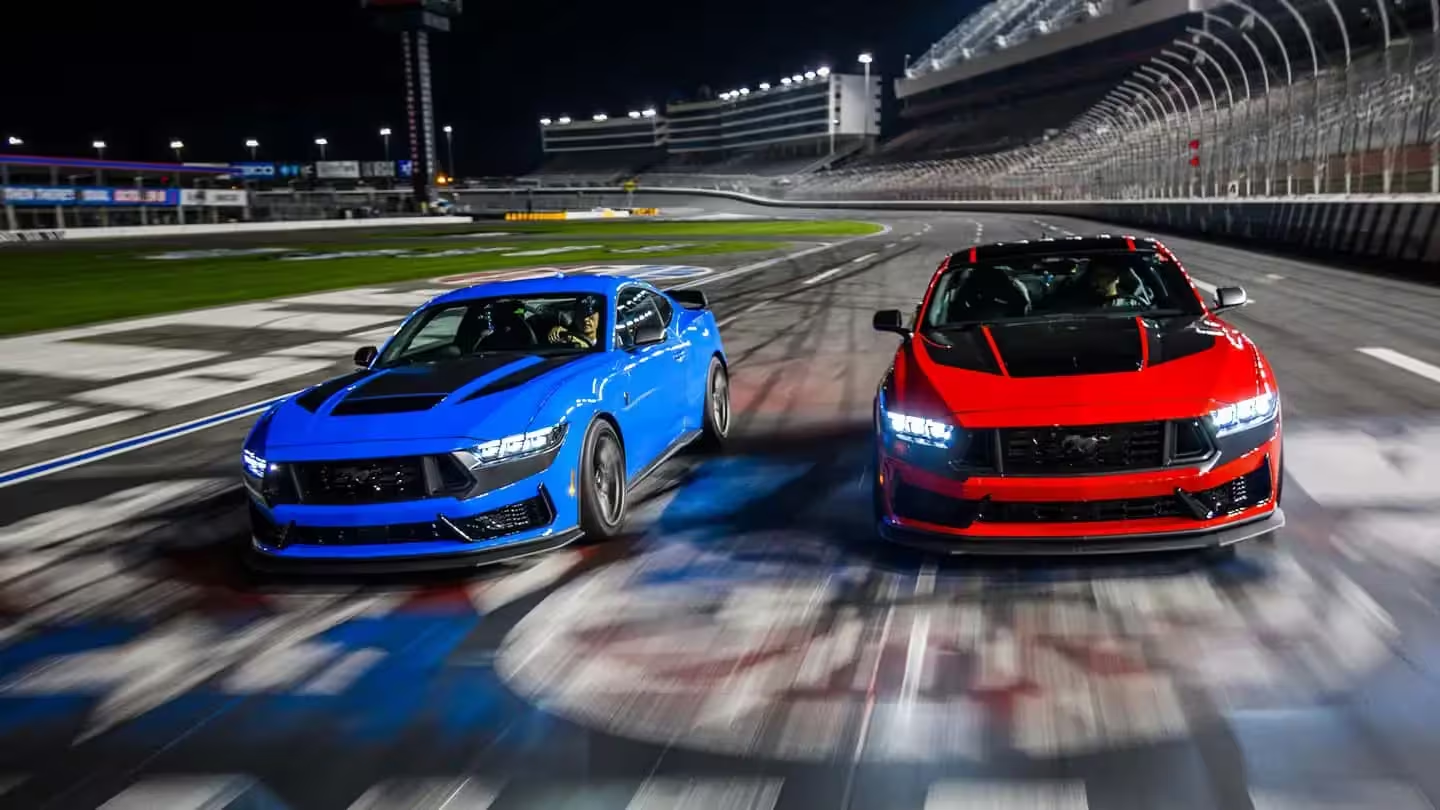4 Minutes
Ford's stance on an electric Mustang
Ford has signaled that a fully electric Mustang is not on the near-term roadmap. With EV adoption slower than many automakers predicted and recent policy shifts in key markets complicating electrification economics, Ford plans to continue producing internal combustion Mustangs well into the 2030s. Industry reporting indicates the company reconsidered earlier plans to convert the next generation Mustang to full battery power and has chosen to protect its legacy V8 lineup for the foreseeable future.
Context: market trends and leadership views
Ford CEO Jim Farley has been vocal about preserving the Mustang's identity as a performance muscle car. While he has left the door open for electrified assist technologies, he has downplayed the idea of a purely battery powered Mustang. The automaker has been testing partial electrification solutions because they can enhance performance for driving enthusiasts, but Ford believes combustion power will still play an important role for as long as market demand and regulations allow.
Vehicle specifications and possible electrified directions
Current powertrain highlights
The latest Mustang lineup includes potent V8 options that define the model's performance character. The 5.0 liter Coyote V8 in variants such as the Dark Horse puts out roughly 500 horsepower. At the top end, Ford's 5.2 liter Predator V8, used in GTD models, produces about 815 horsepower. These engines keep the Mustang competitive with other American muscle cars and halo performance models.

Hybrid potential and performance gains
Ford has publicly tested hybridized powertrains and believes partial electrification can work well for performance drivers. Adding an electric motor to an existing V8 could reasonably contribute an extra 100 horsepower or more to combined output, improving acceleration, torque fill, and fuel efficiency. In theory, combining electric assistance with the 5.2 liter Predator V8 could edge Mustang models closer to the 1,000 horsepower mark from the factory, though that remains speculative.
Design and packaging considerations
Converting a Mustang to a full EV would require substantial redesign of chassis, battery packaging, and cooling systems, which could shift weight distribution and change handling characteristics that purists expect. Ford appears focused on retaining the visual and sensory experience of classic American muscle while exploring ways to use electrification to enhance, not replace, that experience.
Market positioning and comparisons
Positioned as an accessible performance icon, the Mustang competes against both legacy muscle and newer performance EVs. Dodge and other brands have experimented with electrified variants of their muscle cars with mixed reception, informing Ford's cautious approach. A hybrid or mild hybrid Mustang could deliver the best of both worlds: improved efficiency and boosted straight line speed while preserving the signature V8 note and driving feel.

What to expect and timeline
Ford just launched the seventh generation Mustang for 2024 and is unlikely to introduce a fully redesigned eighth generation until the early 2030s. That timeline suggests any broad electrification efforts will be incremental and performance-focused rather than an immediate shift to a battery electric Mustang. For enthusiasts, that means the V8 era will continue for now, with electrified technology used selectively to raise performance and efficiency.
Conclusion
Ford's strategy keeps the Mustang's heritage intact while letting engineering teams test hybrid solutions that can enhance performance. Whether through performance hybrids or electrified assist systems, the Mustang may evolve with some electrical support, but an all-electric Mustang remains unlikely in the near term.
Source: motor1


Leave a Comment